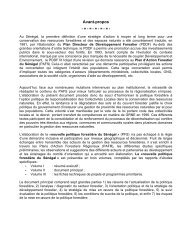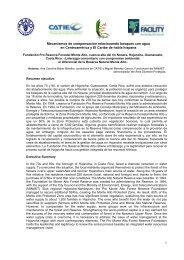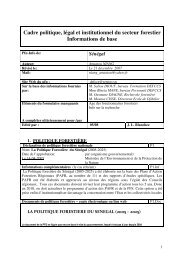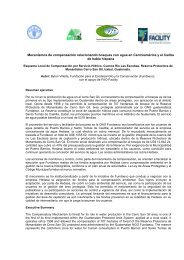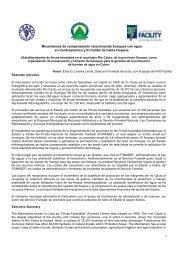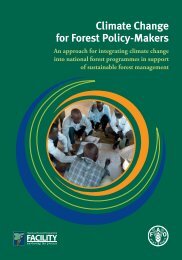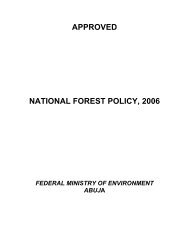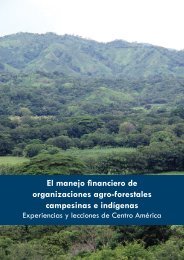2010 Progress Report â Draft - NFP Facility
2010 Progress Report â Draft - NFP Facility
2010 Progress Report â Draft - NFP Facility
You also want an ePaper? Increase the reach of your titles
YUMPU automatically turns print PDFs into web optimized ePapers that Google loves.
<strong>2010</strong> <strong>Progress</strong> <strong>Report</strong><strong>Facility</strong>InterventionLogic2.1 Publishing callsfor <strong>Facility</strong>stakeholdergrant proposals2.2 Evaluatingapplications2.3 Concludingstakeholdergrant contractsObjectivelyVerifiable Indicators− Number, natureand outreach ofactual calls forproposals made inpartner countries;− Stakeholderawareness ofgrant availabilityin target country(e.g.questionnaire).− Number, quality,and relevance ofapplicationsreceived;− Transparency andfairness of theevaluation ofapplications.− Proportion ofcontractsinvolving differenttypes ofstakeholders(NGOs, CBOs,representatives offorest industryand trade, forestrelated Academia,and stakeholdersfrom outside theforestry sector)<strong>Report</strong>ing against Logical Framework− Each partner country opens annually a call of proposals (including theterms of reference, eligibility criteria, and ranking and selectioncriteria) which is made public through newspapers, websites, radio,posters.− When the outreach was good, many proposals are received, of whichapprox 75% are in principle eligible for funding (approx 25% are fromprivate sector, individuals, or the proposal did not reply to the ToR).− In the well functioning partner countries more applications arereceived because stakeholders are better informed, have easieraccess to information and have more trust in the modus operandi.− Each call for proposals in a country attracts between 4 to 30proposals.− Proposals are selected through an open vetting process carried out bythe NMSC, chaired by the Director of Forestry. Members of the NMSCwho have an own proposal submitted have to declare a conflict ofinterest and leave the meeting room when their proposal is evaluatedand ranked.− In many the countries, FAO or other donors are present as observerduring the vetting process.− Approximately 26% of the stakeholders contracts (Letters ofAgreement) are given to Forestry Departments for guiding theprocess and monitoring of activities carried out by the non-statestakeholders.− Approx 74% of the grants support non governmental organizationssuch as NGOs, CBOs, National Institutions (including research andacademic), Associations, and decentralized Governmental agenciesSources of Verification− Advertisements and pressreleases announcing thecall for proposals− WebPages of Government− <strong>Draft</strong> project proposals(stored with the nationalfocal point at the ForestryDepartment)− <strong>Report</strong>s of the selection andranking meeting (storedelectronically at the<strong>Facility</strong>)− Annually, the <strong>Facility</strong> isproducing a report showingall LoAs established since2002− The <strong>Facility</strong> website has asection providing thenames of all recipientorganizations with a shortdescription of theirnormative mandate, theircontact details and theirwebsite (if the have).− The <strong>Facility</strong> database(FORIS) keeps track of allcontracts.−46



